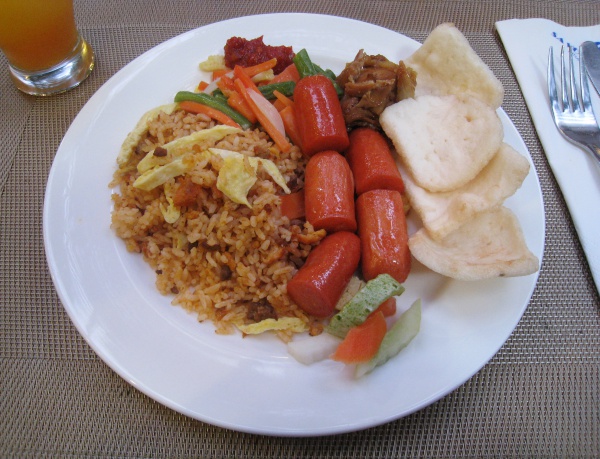Facts About Nasi goreng
Nasi goreng, which translates to "fried rice" in Indonesian and Malay, is a beloved dish from Indonesia that has captured hearts across Southeast Asia and beyond. This flavorful meal is prepared by stir-frying pre-cooked rice with a combination of meats, vegetables, and spices such as kecap manis (a sweet soy sauce), shallots, garlic, shrimp paste, tamarind, and chili. Often, it is garnished with toppings like eggs, chicken, and prawns to enhance its deliciousness.
The origins of nasi goreng stem from the practical need to reuse leftover rice, thus preventing waste and inhibiting microbial growth. Influenced by Chinese fried rice and Middle Eastern pilaf, it evolved when Chinese immigrants introduced their stir-frying techniques and soy sauce to Indonesia. The locals, in turn, adapted these methods, creating the unique flavor profile of nasi goreng.
In Indonesia, nasi goreng is considered a national dish and is enjoyed in many variations, from simple street food to sophisticated restaurant versions. There are numerous adaptations, featuring ingredients such as chicken, goat meat, beef, seafood, and various vegetables. To add even more flavor and texture, people often include condiments such as fried shallots, crackers, pickles, and chili paste.
Nasi goreng is not only popular in Indonesia; it is also a favorite in Malaysia, Singapore, Brunei, Sri Lanka, and the Netherlands, with each region contributing its own unique twist. It can be enjoyed at any time of the day—whether for breakfast, lunch, dinner, or a late-night snack. You can find it everywhere, from street stalls and restaurants to convenience stores. The dish has even found a place in popular culture, with references in songs and TV shows.

 Malaysia
Malaysia